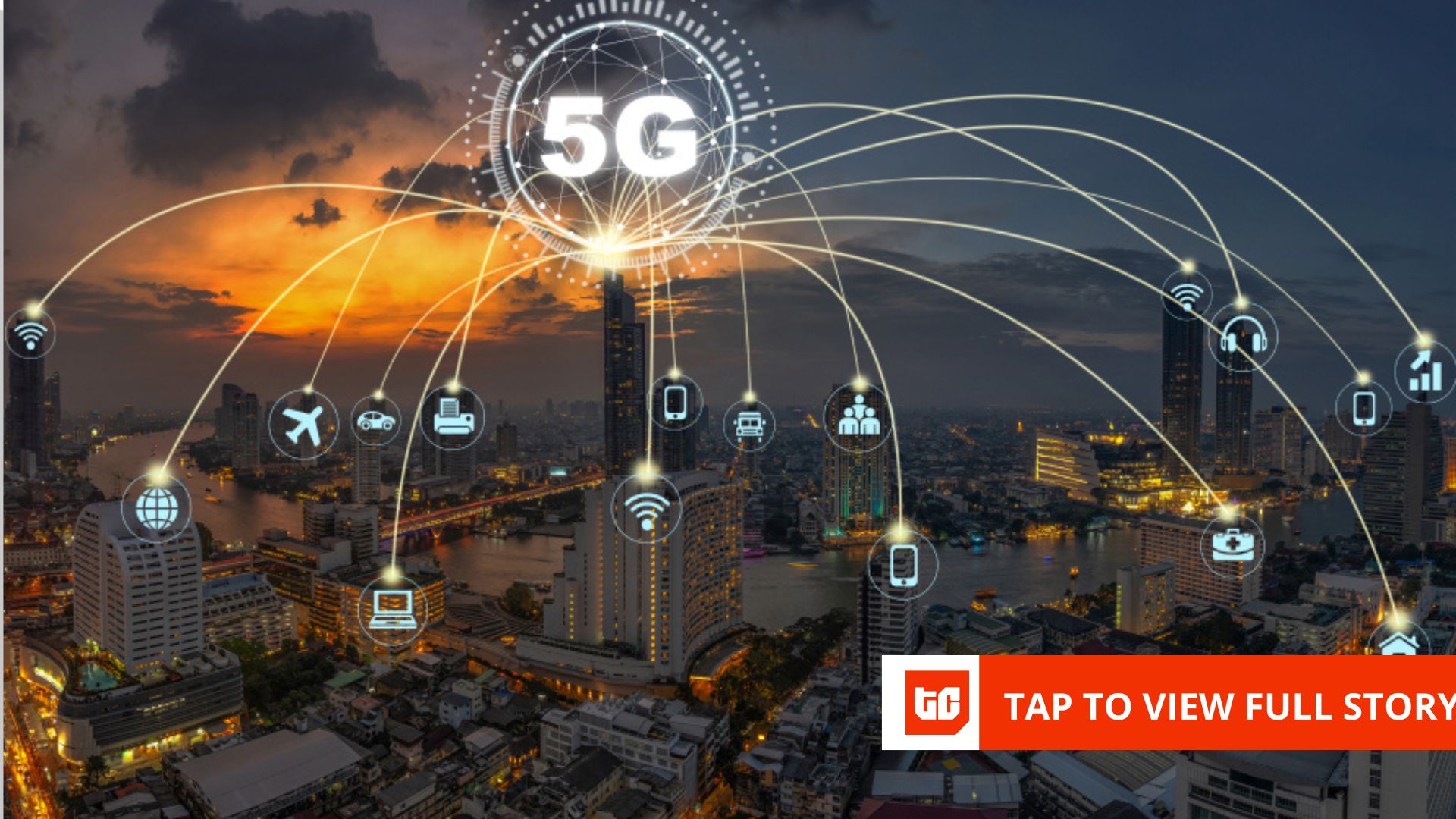Key takeaways
- Social media advocacy is the practice of using social platforms to advance causes like charitable campaigns, connecting with political leaders, or driving social change.
- It differs from brand advocacy, which focuses on using social media to increase brand awareness and trust.
- Using the right tools, organizations advocating for causes can empower employees/volunteers to share pre-approved content to their social media. This is a great way to increase the reach of messaging while keeping the details consistent.
Social media advocacy can be thought of in two different ways. In this post, we’re looking at the practice of using social media as an advocacy tool to:
The other definition of social media advocacy is using social media connections to increase brand awareness and trust. If you’re looking for a post on using social tools for brand advocacy, check out our post on employee advocacy on social media instead!
Reach a wide audience
Social platforms offer the potential to reach an enormous segment of the population in a context where they’re already talking about topics important to them.
More than half of people in 26 countries surveyed by Pew Research Center use social media channels. In some countries, more than 80% of people use social media.
Source: Pew Research Center
A growing number of those people use social media to access news. In the U.S., the Pew Research Center found that 54% of Americans get news from social media.
Even more important for social media advocacy, 21% of all U.S. adults, and 37% of those aged 18 to 29, get news from social media “news influencers.” Those news influencers create content about a wide variety of topics important to social media advocates. These include areas like social issues, public health, and the environment.
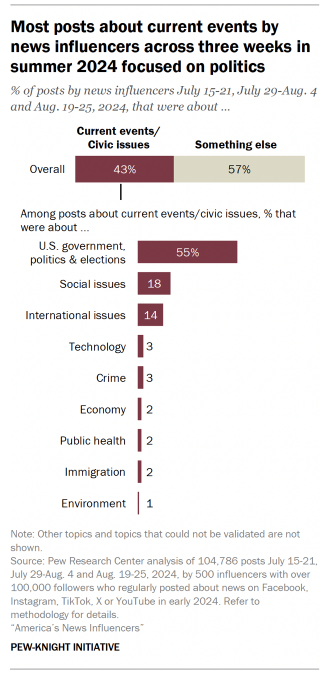
Source: Pew Research Center
Connect with stakeholders and allies
Those news influencers are an obvious point of potential outreach on social media. But social platforms also offer the chance to discover and connect with important stakeholders you might not have considered, as well as allies that are vocal about your cause.
Start with some thorough research. You want to identify key allies, policymakers, and members of the media. Hootsuite Listening is a powerful tool here to identify important conversations and top players in your sphere. Once you identify these important players, be sure to follow them and keep an eye on what they’re saying on social.
Then, you’ll want to try to catch their attention, or even the attention of their followers. Getting noticed by important figures can be a challenge. Outbound engagement is a useful strategy that Hootsuite identified as a top social media trend for 2025. This is the practice of commenting on other accounts’ posts. You become part of the existing conversation and build relevant relationships.
It’s a low-touch form of outreach that can help get you on the radar of important stakeholders and allies – as well as their followers. Hootsuite’s Social Trends research showed that 41% of marketers at nonprofits and 34% of healthcare marketers have been testing proactive engagements.
Leverage the passion of existing online communities
No matter what cause you’re working on, there’s a relevant online community to tap into. The more niche and specific your work, the more likely you are to find a passionate group of people already talking about related subjects. They may even be doing related work.
Fortunately, there are tools to help you find these people so you can engage respectfully and effectively.
Hootsuite Listening helps you uncover trending hashtags, organizations, and events anywhere in the world. You can track what people are saying about your organization and your cause.
Hootsuite Listening doesn’t just track what people are saying. It uses enhanced sentiment analysis to tell you how they really feel. This helps you gauge public opinion related to your cause. You can identify key moments for outreach. You’ll also find the best keywords and hashtags to use to connect with the most active participants in the conversation.
Awareness advocacy
In this type of social media advocacy, the goal is to build awareness about an issue or cause. You’re not necessarily trying to influence a specific action. You primarily want to bring awareness to a subject.
Of course, awareness often leads to action, but in this type of advocacy the goal is to educate and inform. You might focus on sharing infographics or highlighting personal stories of people affected by the issue at hand.
Policy advocacy
This is a more action-oriented form of social media advocacy. The goal is to influence or change public policy. This might involve social actions such as:
- reaching out to local political leaders,
- sharing petitions,
- or creating campaign-based hashtags.
This type of advocacy also involves an element of raising awareness. But the primary goal is to drive real change at the local, regional, national, or even international policy level.
Influencer advocacy
We mentioned above that news influencers can have great value for social media advocacy. So can popular influencers and content creators who have a dedicated following in any area that’s relevant or connected to your cause.
Communities have substantial overlap on social media. For instance, a gardening influencer might offer significant value for campaigns related to areas like:
- climate change,
- food security,
- agricultural policy,
- or even housing policy.
The most important thing is to find influencers whose brand values align with your organization and your cause.
For a step-by-step guide, check out our full post on how to work with influencers on social media.
Employee advocacy
Employees and volunteers can also be fantastic advocates for your organization or cause. These are likely some of your most dedicated advocates. An employee advocacy program helps them extend the organization’s messaging to their wider social networks.
Hootsuite Amplify helps take the guesswork out of social media advocacy for your staff and volunteers. Your social team creates pre-approved social media content. Team members can then access (and customize) the content to share on their own social feeds.
Amplify integrates with Proofpoint, an industry-leading compliance tool that allows you to introduce guardrails against personalization that goes against your values or style guide.

Especially when working on advocacy in sensitive or political fields, this protects both team members and the organization by ensuring the messaging is vetted and approved.
1. Set clear goals
We’ve already talked about some of the different overall goals you might want to achieve with your social media advocacy efforts. But before you launch your social media advocacy program, you need to get much more specific.
Not sure where to start? Here are some relevant benchmark engagement rates in Q4 2024 according to Hootsuite’s primary data.
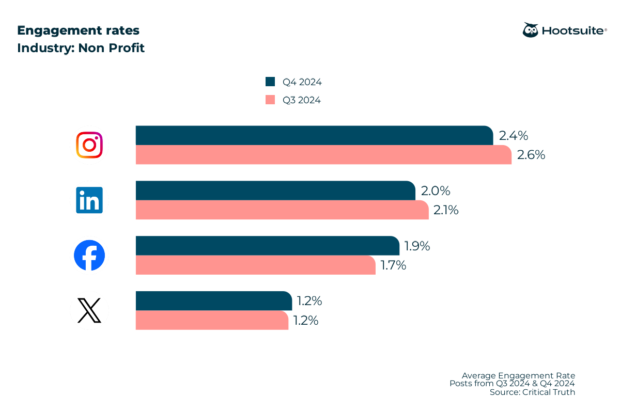
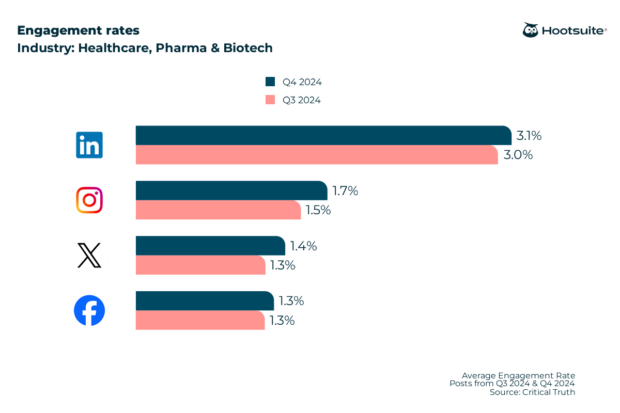
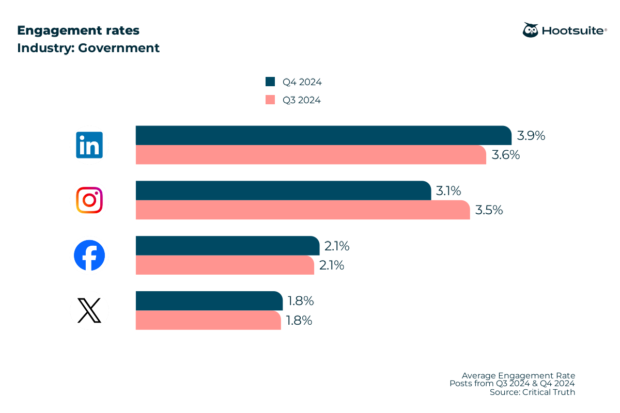
We’ve also got a whole blog post to walk you through the process of setting clear and achievable goals for social media.
2. Identify your target audience
Once you know your goals, you need to narrow down who you will target with your messaging. Knowing what you’re trying to achieve on social media determines who you need to speak to.
For example, say you’re trying to influence public policy. You need an audience of politically active, informed social media users. You’ll also want to connect with political leaders and members of the media. If your goal is fundraising or awareness, you may have a broader audience.
Knowing exactly who your target audience is and their key demographics also guides decisions about which social media platforms to focus on.
For more details, visit our blog post on how to find your target audience on social media.
3. Develop useful resources and thought leadership
Effective advocacy campaigns rely on the social element of social platforms. That means you need to create resources that build momentum. Think about content that inspires sharing and engagement, like infographics and personal stories.
Thought leadership is also important here. It helps establish your organization and stakeholders as the go-to experts in your field.
Your organization likely has existing information and campaign resources. If you’re not sure how to adapt them for social media, try using an AI tool like OwlyWriter AI. You can use OwlyWriter to create social media posts based on an existing blog post, campaign page, or other content.
You can also use OwlyWriter to:
- Write a new social media caption in a specific tone, based on a prompt
- Generate post ideas based on a keyword or topic (and then write posts expanding on the idea you like best)
- Identify and repurpose your top-performing posts
It’s important to create resources and thought leadership that speak to individuals and other advocacy organizations. But don’t neglect brands here. Consumers want brands to join the conversation on social justice moments (43%) and political events (31%).
Brands have significant resources and marketing teams that can increase the reach of your advocacy message. Just be sure to find a brand that wants to be true business partners, rather than engaging in “washing” (greenwashing, rainbow washing, etc.).
4. Identify key trends and moments to spotlight your cause
It’s important to have a consistent social media strategy and plan your content calendar. But it’s also a good idea to watch for key cultural moments that create an opportunity to draw attention to your cause.
Hootsuite’s research shows that nearly a quarter of social marketers at non-profits and 20% of those in healthcare have adjusted their social strategy to lean into a meme or trend.
Hootsuite Listening and Talkwalker are two key tools that can really help here. They allow you to spot trends as they emerge and predict how those trends will develop over time.
5. Track your results, refine your strategy, and reallocate resources
Social media advocacy work often involves limited budgets and stretched resources. Tracking and analyzing your results helps you learn which investments of your time and budget provide the greatest return, so you can refine, restrategize, and reallocate your budget to make the most of every dollar you dedicate to your social media advocacy strategy.
The tool also makes it easy to create custom reports to showcase your results to your stakeholders and share insights with your team.
Hootsuite Analytics collects your stats from Facebook, Instagram, Twitter, LinkedIn, and TikTok.
It helps you track metrics like:
- Reach
- Engagement rate
- Number of messages, calls, and emails
- Daily engaged users
- Website clicks
- And much more
You can set up custom boards that give you an overview of your most important metrics at a glance, over a select period of time, and look up much more granular information, down to the performance of every individual post you published.
With Hootsuite Analytics, you can also:
- Find out when your audience is online
- Get personalized recommendations for your best times to post for each of your social media accounts
1. Movember
Movember is a men’s health advocacy group that has mastered the art of social media advocacy. Their 2023 campaign leaned hard into the trend that highlights how much men think about the Roman Empire.
This year, they created a series of “mustache facts” to encourage engagement.
But the campaign’s real social media advocacy success does not come from the content posted by the organization itself.
Instead, it comes from the hundreds of thousands of people who create and share content related to the cause during the month of November. Especially those men who grow mustaches in support of the campaign, which make for easy social media progress updates. The #movember hashtag has more than 2.5 million posts on Instagram alone.
2. National Down Syndrome Society
The top-pinned video on the National Down Syndrome Society’s TikTok has more than 32 million views and an active comments conversation.
While not all their videos go viral, they do consistently get thousands of views and engagements. Their current campaign revolves around Town 21, an imaginary town where everyone is treated with dignity and respect.
The videos support their advocacy goals, raising awareness while also supporting fundraising and policy change.
3. Racial bias in pulse oximetry
This example may sound a little obscure, but it helps show how social media advocacy can work for grassroots campaigns without a recognized charity or institution leading the way.
For background, pulse oximetry is a method of monitoring blood oxygen levels. The medical community has known for some time that it is less reliable in people with darker skin tones, but this issue had not been explored to determine how the variation would impact health outcomes. This became especially important during the COVID-19 pandemic.
One of their most interesting findings is their analysis of the most influential X users in this discussion. The user with the second-most influence had just over 2,600 followers. The user with the third-most influence had only 513. Small, focused communities of users can extend a message quickly to an audience well beyond that of the original post

Source: Ahmed et al., Racial Biases Associated With Pulse Oximetry: Longitudinal Social Network Analysis of Social Media Advocacy Impact, J Med Internet Res 2024;26:e56034
Tap into the power of employee advocacy with Hootsuite Amplify. Increase brand reach, keep employees engaged, and measure results—safely and securely. Learn how Amplify can help grow your organization today.




